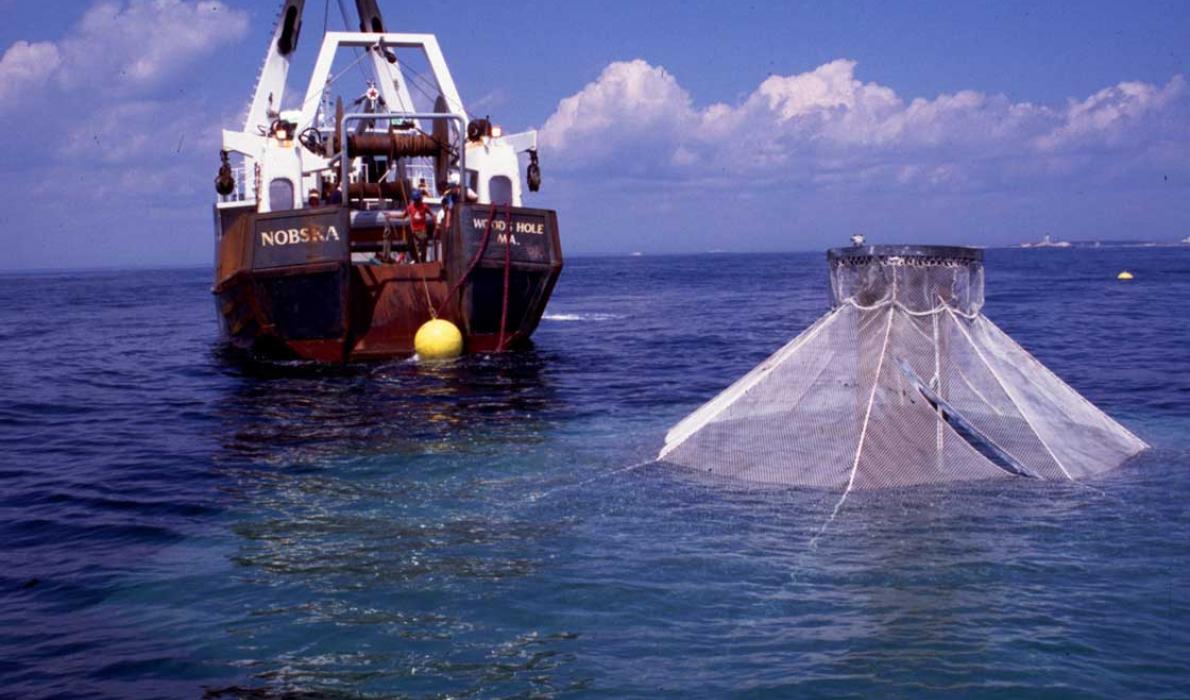Posted April 7, 2015
Last modified April 7, 2015
Aquaculture, once seen as a viable alternative to chasing declining wild fish stocks, is rebounding. But fish farming is taking shape in locations and using technology far different from the floating pens seen just off the coast back in the early 1990s.
One new area entrepreneurs are exploring is in waters three-plus miles off the mainland, much of which is managed by the federal government. Siting farms in these offshore waters eliminates impact to scenic views, and reduces, but doesn't eliminate, conflicts with other marine endeavors.
The species that seems best suited to offshore aquaculture is mussels, with very little labor required once the shellfish are established, and no feeding needed. New equipment, available from places like New Zealand, where such aquaculture is common, allows the mussels to be grown and harvested from some 50 feet below the surface.
Dave Alves, the aquaculture coordinator for the National Marine Fisheries Service's northeast office, said a mussel farm was permitted in late summer for an area about six miles south of Woods Hole, Mass. The 30-acre site is owned by a fisherman.
Another project now under review for permitting is about 8.5 miles off Rockport, Mass., he said. If an unmanaged species is being raised in federal waters, the U.S. Army Corps of Engineers is the lead permitting agency, he said.
Such ventures make sense for fishermen seeking to add a source of revenue that doesn't require a lot of labor once established, Alves said.
"We see this as one way to help," he said.
Being well offshore means "you get away from all the conflicting uses," Alves said. "People don't realize how heavily used our inshore waters are," with recreational boating, fishing and shipping all potentially generating objections.
Offshore aquaculture was been developed for research purposes off coastal New Hampshire from 1998 to 2010. Richard Langan, director of the University of New Hampshire's Coastal and Ocean Technology Program, said several species were established six miles off Rye; the project fell under state, not federal review, because the Isles of Shoals archipelago is the point from which the three-mile federal line is computed, and the farms were within three miles of that state land.
The work there included the more traditional fish cages, as well as long lines used to raise shellfish. Blue mussels and sea scallops were established, the mussels on vertical rope and the scallops in what are known as lantern cages, which are trays with nets that resemble Japanese lanterns.
The scallops proved to need too much attention, Langan said. Individual scallops needed a generous amount of space between them, and often were hampered by "fouling organisms" in the environment. And scallops are notoriously vulnerable.
"If you look at them the wrong way, they die," Langan said.
But mussels were another story. The seedlings were collected twice a year from inshore locations and attached to ropes hung from horizontal lines established 20-feet to 40-feet below the surface. Within a year, the mussels grew to 2-inches or more, and the meat yield ratio ranged from a low of 42 percent up to 60 percent, he said.
"We were getting really good results," Langan said. "The quality was remarkable."
One line—600-700 feet long—would produce 15,000-20,000 pounds of mussels each year, with a yield of a million pounds possible if enough lines were established.
Though harvesting equipment is expensive and permitting can be arduous, Langan sees a bright future for such offshore projects.
"I think there's huge potential for mussel culture," he said, especially given that the U.S. imports 40 million pounds of mussels annually from Canada.
Siting the farm offshore didn't put the gear or shellfish at risk. Waves, winds and storms had little effect, Langan said. One three-day period saw 30-foot high seas, yet "We never lost any gear."
The seedling mussels are gathered by placing ropes in inshore waters, then the young shellfish are put in something resembling cotton socks, which are then attached to the lines in the offshore configuration. The socks rot, and the more mature mussels then attach to what Alves describes as "fuzzy rope."
The gear needed to harvest the mussels is readily available for purchase, though Alves noted that none is made in the U.S.
"This is a mature technology in the rest of the world," with the industry strong in New Zealand, Spain and Canada. "[Fishermen] can buy everything they need off the shelf," he said.
Alves and Langan are optimistic about the role mussel farming can have in supplementing income for fishermen.
"There's a heck of a market for them," Alves said. "But you have to have a good-sized farm to make a living at it." The U.S. imports 90 percent of its mussels, with 50 percent of those cultured.
"Why can't we do it?" Alves asked.
Some projects are run by fishing coops, which makes sense, he said. A group of fishermen can share the work, and can buy a boat built designed to harvest the mussels.
All marine resource harvesting helps support working waterfront infrastructure, he added.
"If you're not bringing money over the dock, you're looking at condos," he said. "It's not a silver bullet, but it's one piece of the puzzle that keeps things going."
This is the second in a series of stories exploring changing ocean uses that are the focus of the regional ocean planning process. For more information about Island Institute's marine work, contact Marine Programs Director Nick Battista at nbattista@islandinstitute.org; for more information on regional ocean planning, contact John Weber at jweber@northeastoceancouncil.org

Contributed by

